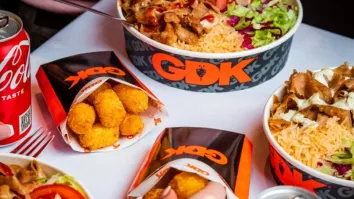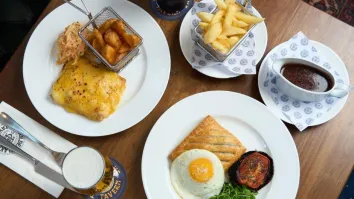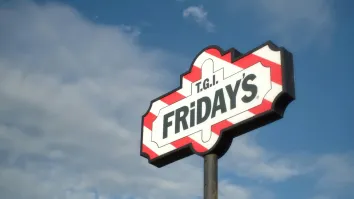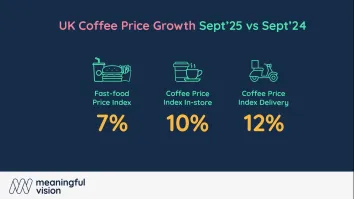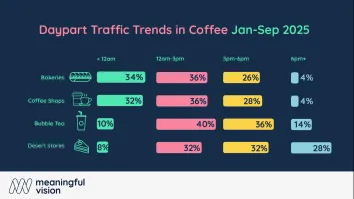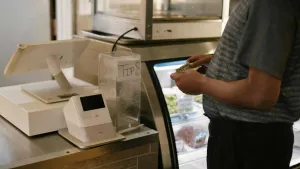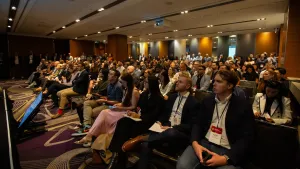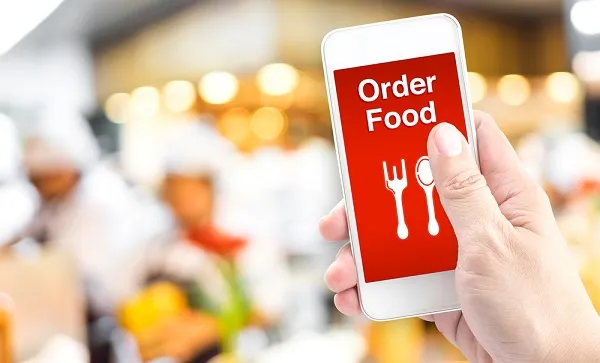
How businesses best utilise tech to deliver a memorable customer service
Tech offers a way to find new solutions to customer pain points, from managing queues to taking payments.
Here, Livingbridge director Steve Cordiner, gives his point of view on current and emerging tech trends in the industry:
The future of customer interaction
Even in a tech-driven world, customers will continue to be swayed by hospitality operators that offer good service. What is likely, however, is that they will expect that service to include some element of technology. Restaurant 2025, a report released earlier this year by Oracle Hospitality which surveyed 250 restaurant operators and customers, showed that 66% of operators believe guests paying by wearable technology will be mainstream by 2025. The report also revealed that half of the customers surveyed believed facial recognition technology would improve their experience.
The technological innovation is certainly ready when hospitality brands are. Tesco has started to use face-scanning technology to deliver personalised offers to customers when they reach the cash register, Paypal is now using voice technology as a new way to send payments, and Disney is using augmented reality to allow fans to hunt for their favourite characters at merchandise launches.
For hospitality operators, the future will stay customer-first, so the key question will be how can businesses best utilise this tech to deliver memorable customer service?
The evolution of payments
It has been a decade since contactless payment was first introduced into the UK market and four years since the introduction of Apple Pay. A recent GO Technology report from CGA and Zonal reveals that 67% of 25-34yr olds would spend more cash and buy more drinks if they could order and pay from their mobile device. The next step is likely to be more innovative ways of paying the bill, whether that’s payment solutions such as Yoyo Wallet, which enables secure mobile payments, automated loyalty and digital receipts, or operator-run apps used by the likes of GBK, which offers pre-ordering and loyalty points. Looking across at the retail world, whether it’s the Amazon Go Store or Barclaycard’s planned grab and go technology, it is clear customers aren’t looking to hang around, whether it’s in a queue or waiting for the bill.
Transforming bookings and customer dialogue
Back in 2016, Facebook announced the launch of its ‘chatbots’ which allow companies to deliver automated customer support via its 'Messenger' service. Since the announcement, brands have explored ways in which the technology can work for them. The software enables operators to have a simulated conversation with prospective customers. The technology has now gone one step further, not only allowing operators to converse with customers but also performing functions such as booking a table, with PizzaExpress’ booking bot launched in 2017. This chatbot technology can free up front-of-house time, but also open up a potential new customer stream by targeting them on their social platforms.
These tools also provide all-important ways of generating customer feedback and usable metrics. Bistrot Pierre have pioneered the use of real-time customer response survey technology to gain immediate insight into their guests’ experiences3. The immediacy of such feedback offers the unique opportunity to respond before the guest’s experience ends. This means businesses can promote loyalty and rectify any negative experience immediately. In addition, this technology collects customers’ emails, leading to a far more direct dialogue with customers.
Do you need assistants?
From Siri to Alexa, the nation has readily adopted assistant technology, whether in their homes or on their handsets. The technology is evolving at a fast pace, and we have already seen it used by brands such as Just Eat. Customers can already order a takeaway via their assistant and then simply request “Alexa, ask Just Eat to reorder my last Chinese" for future takeaways. They can even check the delivery status of their dish by requesting "ask Just Eat: Where's my meal?". Facebook’s AI assistant, M, is likely to be another channel in the future. Although not yet universally rolled out, it can automatically complete tasks for users, such as purchasing items, arranging deliveries, reserving restaurant tables, and even arranging travel. But it doesn’t stop there. M can also interject into a chat on Messenger where you’ve stated you’re hungry, to suggest ordering some food.
For brands that can be recognised by these tools as an individual’s preferred restaurant, bar or takeaway there is a fantastic opportunity to generate repeat sales from customers.
How social media is changing the customer experience
Whilst hospitality operators have had a social presence for a number of years, more are now recognising how tapping into their customers’ social activity can have a huge impact on their brand exposure. According to a study by Zizzi, people aged 18-35 reportedly spend five days a year browsing food images on Instagram, and 30% would apparently avoid a restaurant if its Instagram presence was lacklustre. Zizzi even hired an influencer to train its staff to teach diners how to capture the perfect photo. Operators are already trying to make their restaurants and bars more shareable, with the likes of Peggy Porschen’s flowery entrance helping the café bring in the selfie crowds.
Operators will need to use tech to effectively capture and analyse their social status. From social media management platforms such as Hootsuite to tools like Crimson Hexagon, which offers detailed and segmented analytics providing live social monitoring, keyword and hashtag comparisons with interactive graphs and charts to illustrate an operator’s basic social metrics.
The benefit of customisation
Something that will encourage customers to share about you socially is if they feel they’ve had a customised experience, and an area where this is particularly relevant is around dietary requirements. In 2017, operator Vita Mojo announced the launch of a flagship site in London which offers diners the opportunity to adapt their meals via iPads to suit their dietary needs. With veganism having increased by 360% over the last decade in Great Britain and the healthy-eating lifestyle trend generating diets ranging from Paleo to DASH4, allowing customers to choose their own version of an adaptable menu is a logical next step.
In conclusion, the use of technology across the industry is vital for an operator to be able to offer a customer experience that outperforms competitors. This year is set to be tough for the sector, however I believe if operators truly adopt and implement the right technologies that help the business to adapt and grow, they can drive footfall to sites and ultimately generate more revenue.




